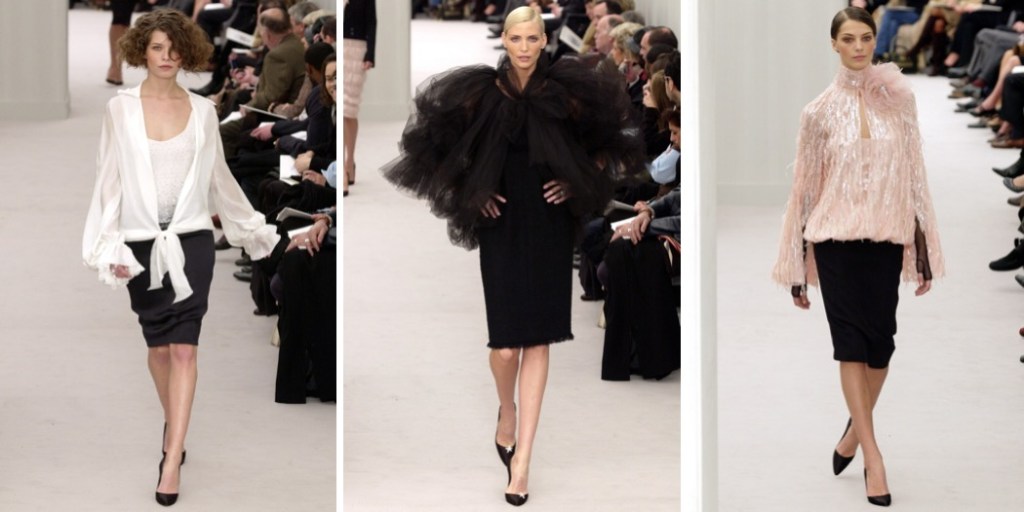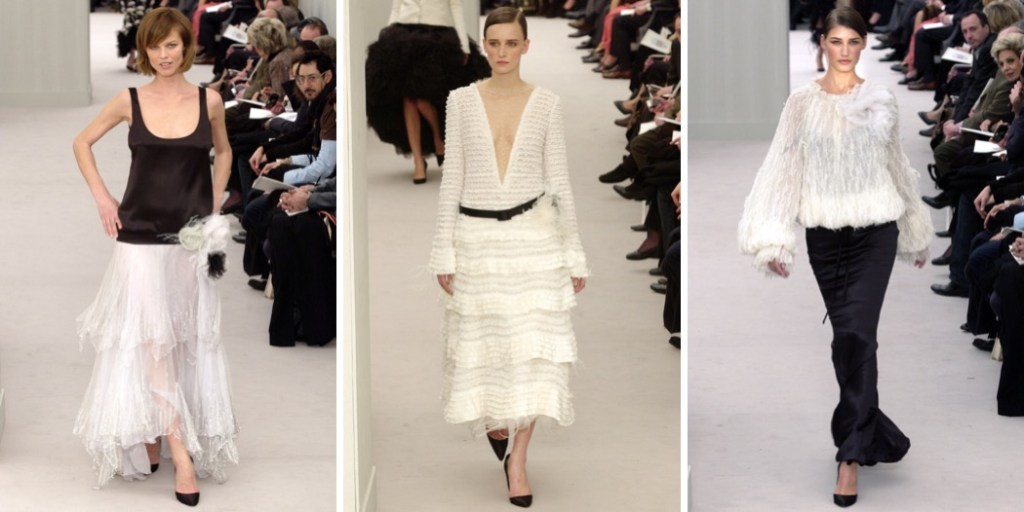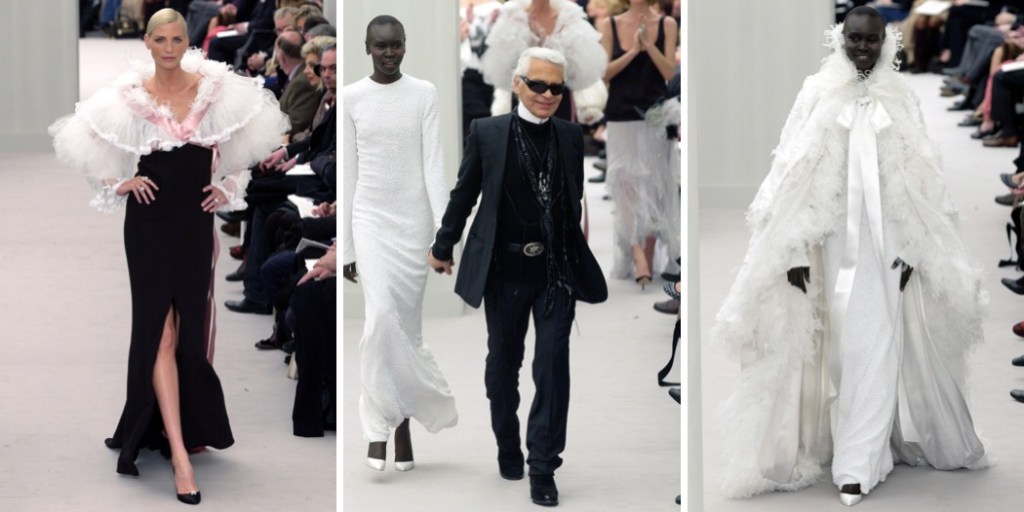It’s quite shocking that Thom Browne officially showed couture just now. Pretty much every collection he has presented in the last couple of seasons is haute level. His entrance into the Parisian schedule couldn’t be more dramatic. The audience were seated on the stage of Garnier Opera house. Then the curtain went up. And they gasped at the sight: the red and gold auditorium was entirely populated by three thousand black and white cut-out illustrations of someone who looked very much like Thom himself. You had to wonder: was there to be something autobiographical in the formal introduction as a couturier he was about to make on this storied stage? Well, there was definitely a momentous sense of occasion in it for him. “It’s really special – the idea of taking almost American sportswear, the tailoring we do, and bringing it into a couture setting,” he said. “I thought it was important, even in representing American fashion.” The collection was heavily costume-y and theatrical in every possible sense. To the strains of Visage’s “Fade to Grey,”Alek Wek walked up the aisle and onto the stage wearing – what else – a gray Thom Browne jacket and kilt. She sat on a pile of gray luggage, and things commenced around her. There were Thom Browne gray suits and coats in multitudes, all strictly narrow in silhouette, but each almost a vignette in itself. There were patchworks of small country town landscapes, and seasides with sailboats. There were elaborate brocades, Prince of Wales checks, coats and short-suits embroidered with silver and gold sequined stripes. One coat had a pattern of 3D clouds woven into it.



Strange symbolic people began to come and go. Eleven characters dressed as bells, with bell-hats and enormous swollen patchworked coats and bells as spurs on their heels. Pigeon-people – one being Jordan Roth – in feathery bodysuits emerging from huge hip-level blazers. The drama took sinister turns. Bells on the soundtrack began to take on a funereal tone. A woman in extravagant black Edwardiana visited and left. And then another, in white. Ultimately, there was a visitation of someone in a white sequined coat, with a conceptual train on their head. Stephen Jones had obviously been working overtime, too. Then finally, a bride in a white coat-dress. Browne related the script, a dark psychodrama with a happy ending. “The main character was sitting at the station, thinking about her life and not being very happy. And then all of a sudden she sees all of her fantasies walking in,” he related. “She was planning on drowning in her sorrows. So that was the reason for all the underwater kind of things – the preppy East Coast iconography that I play with all the time. But then she realizes her life was actually better than she thought. So she didn’t get on the train.” Hard to be sure, but it seemed like a very American story about redemption and triumph – over depression and set-back. In any case, Browne was beaming.



Collage by Edward Kanarecki.
Don’t forget to follow Design & Culture by Ed on Instagram! By the way, did you know that I’ve started a newsletter called Ed’s Dispatch? Click here to subscribe!












